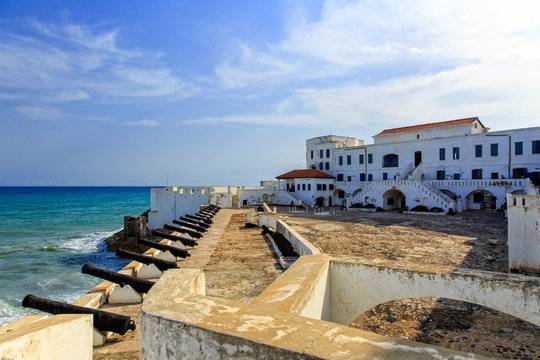The Role of Ghana's Coastal Forts in the Transatlantic Slave Trade
Ghana, once known as the Gold Coast, was an integral part of the transatlantic slave trade due to its strategic location along the West African coast. The country’s coastal forts, primarily built by Europeans in the 15th and 16th centuries, became key hubs in the transport of enslaved people from Africa to the Americas and Europe. These forts were more than just military outposts; they were centers of human trade, where enslaved Africans were held before being shipped across the Atlantic.
The Construction and Purpose of Coastal Forts
The construction of these coastal forts was primarily driven by European colonial powers, especially the Portuguese, Dutch, British, and the Danes, who sought to exploit Ghana's vast resources, including gold, ivory, and human labor. Forts such as Cape Coast Castle, Elmina Castle, and Fort James were built to serve as trading posts for these resources, but they quickly became central to the slave trade. The forts were strategically located on Ghana's coastline, making them ideal locations for European traders to establish their dominance in the region.
These forts were fortified buildings with high walls, watchtowers, and heavy gates designed to protect European traders from local African kingdoms. However, inside these fortresses, the true nature of the trade took place. The fort’s dungeons, where enslaved Africans were held, are a stark reminder of the brutality of the trade. The forts became prisons for thousands of captured Africans, often kept in appalling conditions before being sold to European merchants.
Cape Coast Castle and Elmina Castle: The Heart of the Slave Trade
Cape Coast Castle, one of the most famous forts in Ghana, is located along the central coast and played a pivotal role in the slave trade. Built by the Swedish in 1653 and later taken over by the British, Cape Coast Castle became the hub for the exportation of enslaved Africans to the Americas. It is estimated that between 1500 and 1800, more than 3 million Africans passed through this castle alone.
The dungeons of Cape Coast Castle were overcrowded, with little ventilation or light. Enslaved individuals were often shackled together in dark, filthy conditions for weeks before being shipped out. The image of the “Door of No Return†is poignant, as it symbolizes the final exit for many Africans leaving the continent, never to return.
Elmina Castle, constructed by the Portuguese in 1482, holds the distinction of being the oldest European building in sub-Saharan Africa. Like Cape Coast Castle, Elmina served as a critical point in the slave trade, where thousands of Africans were imprisoned in cramped, unsanitary cells. The castle is a symbol of Ghana’s role in the historical tragedy, with many enslaved individuals enduring brutal conditions here before being taken on long, harrowing voyages across the Atlantic.
The Dungeons: A Place of Suffering
The dungeons of these forts were overcrowded and poorly ventilated, and conditions were so dire that many enslaved Africans perished before even making it to the ships. The enslaved men, women, and children were held in these dark, damp chambers for months, often chained and denied basic human necessities. The stench of disease and human waste permeated the air, making the environment unbearable.
Legacy and Preservation of the Forts
Today, the forts and castles along Ghana's coast serve as a powerful reminder of the nation's painful history with the transatlantic slave trade. Sites like Cape Coast and Elmina Castle have been preserved and turned into museums to educate the world about the atrocities that took place within their walls. These sites attract tourists from around the world, many of whom trace their ancestry back to the enslaved Africans who passed through these very forts.
The preservation of these forts is also a symbol of reconciliation and healing. Many Ghanaians, especially those in the diaspora, visit these castles as part of the "Return to Africa" movement, connecting with their heritage and understanding the profound legacy of the slave trade.
The coastal forts of Ghana were integral to the transatlantic slave trade, serving as the final point of departure for millions of enslaved Africans. These fortresses stand as historical monuments to the dark chapters of human history, reminding us of the inhumane practices that defined the trade. Through the preservation of these forts, the story of the enslaved Africans who passed through them lives on, ensuring that the atrocities committed during the transatlantic slave trade are never forgotten.


